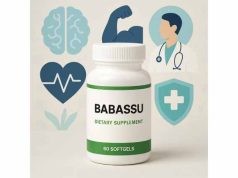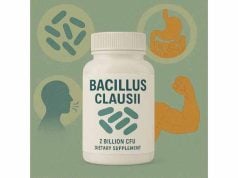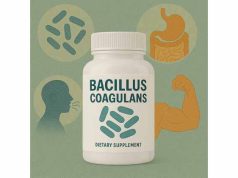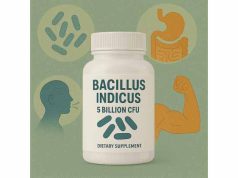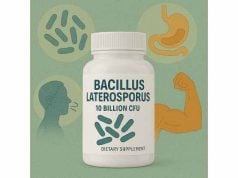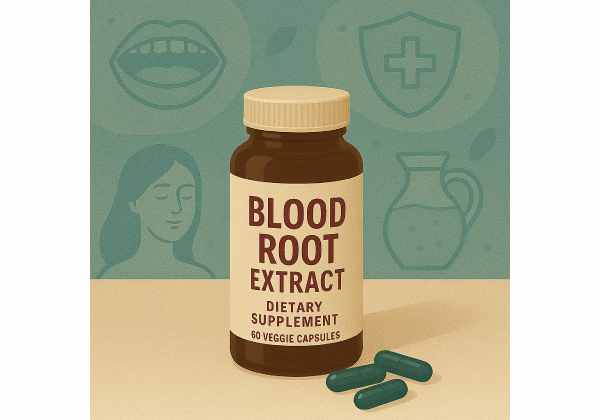
Blood root extract, derived from the rhizome of the Sanguinaria canadensis plant, is a potent botanical with a long history in traditional medicine and natural health circles. Known for its striking red sap, blood root has been used by Native Americans for centuries as a remedy for respiratory issues, skin conditions, and as a ritualistic dye. Today, blood root extract is prized for its unique blend of alkaloids—especially sanguinarine—believed to provide antioxidant, antimicrobial, and anti-inflammatory effects. While it continues to attract interest for oral care and topical applications, blood root’s potent properties also demand careful, informed use. This guide explores what blood root extract does, how it works, and what you need to know for safe, effective supplementation.
Key Takeaways
- Blood root extract contains sanguinarine, a compound with strong antimicrobial and antioxidant properties.
- Traditionally used for oral health, skin issues, and as a natural dye, but modern use requires caution.
- Potential benefits include fighting bacteria, supporting gum health, and aiding wound healing when used appropriately.
- Not safe for internal use in high doses—side effects and toxicity risks exist, especially with unsupervised use.
- Consult a healthcare professional before using blood root extract, particularly for oral or topical health.
Table of Contents
- Blood Root Extract Introduction: Plant Origins and Historic Uses
- Biological Compounds and Action of Blood Root Extract
- Health Benefits and Evidence-Based Uses of Blood Root Extract
- Blood Root Extract Safety, Side Effects, and Important Interactions
- Blood Root Extract Dosage Guidelines and Best Practices for Use
- Blood Root Extract FAQ: Answers to Top User Questions
Blood Root Extract Introduction: Plant Origins and Historic Uses
Blood root (Sanguinaria canadensis) is a perennial flowering plant native to eastern North America. Its name comes from the vivid red sap released when its rhizome is cut or bruised—a feature that has fascinated herbalists and healers for centuries. Indigenous peoples of North America first recognized blood root’s value, using the root for a wide range of purposes:
- Traditional Medicine: Blood root was commonly brewed into teas or ground into poultices for treating coughs, sore throats, respiratory infections, skin wounds, and even as an emetic (to induce vomiting). It was also applied topically for skin lesions, warts, and fungal infections.
- Ritual and Symbolism: The brilliant red juice was used as a natural dye for fabrics, baskets, war paint, and as a ceremonial pigment for body art or spiritual rituals.
- Oral Health: Some Native American tribes chewed blood root for dental hygiene and gum care, setting the stage for its modern interest in oral care products.
In the 19th and early 20th centuries, blood root found its way into Western herbal medicine. Physicians and herbalists included it in syrups, lozenges, and tinctures for its expectorant and antiseptic properties. Blood root was also used as an ingredient in “black salves” for skin growths—though this use is controversial and carries significant risks.
Modern Applications
Today, blood root extract is most commonly found in natural oral care formulations—such as toothpaste or mouthwash—where it is valued for its purported antibacterial and anti-inflammatory effects on gums. It also appears in certain topical creams and traditional herbal blends, but reputable practitioners emphasize responsible, informed use.
Chemical Profile
The rhizome of blood root is rich in alkaloids, the most notable being sanguinarine. This compound, along with chelerythrine and others, is thought to give blood root its strong biological activity. While these alkaloids may provide therapeutic effects at very low concentrations, they are also associated with toxicity risks if misused.
A Note on Safety and Respect
It’s important to understand that blood root is not a benign herb; its benefits are paired with the potential for harm if used improperly. Blood root extract should never be ingested in high doses or applied to large skin areas without medical guidance. Adulterated or unregulated “black salves” or home remedies can cause severe tissue damage.
Summary
Blood root extract’s historic and modern uses stem from its potent, complex chemistry. While it has a place in natural wellness, it demands careful, respectful, and well-informed use to avoid unintended risks.
Biological Compounds and Action of Blood Root Extract
The power of blood root extract lies in its unique chemical profile—most notably a group of isoquinoline alkaloids that are responsible for its deep color and biological effects. Understanding these compounds is key to appreciating both the potential and the risks of blood root supplementation.
Key Active Compounds
- Sanguinarine: The most famous and researched alkaloid in blood root, sanguinarine is a bright red pigment with notable antimicrobial, anti-inflammatory, and antioxidant actions. It can inhibit the growth of bacteria, fungi, and certain viruses, which explains its historic use in oral care and wound management.
- Chelerythrine: Another alkaloid with similar biological activities, contributing to the plant’s overall effects.
- Other Alkaloids: Berberine, protopine, and chelirubine, among others, round out blood root’s pharmacological profile.
Mechanisms of Action
- Antimicrobial Properties: Sanguinarine disrupts bacterial cell membranes and can inhibit biofilm formation. This is particularly relevant in oral health, where bacterial plaque and biofilms drive gum disease and tooth decay.
- Antioxidant Effects: Blood root’s alkaloids can scavenge free radicals, helping to limit oxidative stress in tissues. This property supports its traditional use in wound healing and inflammation.
- Anti-inflammatory Actions: Research suggests that blood root extract can reduce the production of certain pro-inflammatory cytokines and enzymes, providing a soothing effect in conditions of irritation or minor injury.
- Potential Anticancer Activity: Laboratory studies have explored sanguinarine’s ability to induce apoptosis (programmed cell death) in certain cancer cell lines, though these effects have not been proven safe or effective for human use.
Topical Versus Internal Use
- Topical Applications: Blood root is primarily used externally for oral and skin health. In carefully formulated products, it may help reduce gum inflammation, inhibit bacteria that cause bad breath and gingivitis, or aid in the management of minor skin issues.
- Internal Use: Oral ingestion of blood root or high-concentration extracts is NOT recommended except under professional supervision. Sanguinarine is toxic in large amounts and can cause nausea, vomiting, dizziness, and severe mucous membrane irritation.
Formulations and Standardization
Quality matters with blood root supplements. Standardized extracts with controlled, low concentrations of sanguinarine are safest and most predictable. Home-prepared or highly concentrated extracts pose significant safety risks.
Synergistic Effects
In traditional and modern herbal medicine, blood root is sometimes combined with other botanicals—such as goldenseal, myrrh, or echinacea—to target complex oral or skin issues. Such combinations must be used with caution and expertise.
Conclusion
Blood root extract’s action is rooted in its alkaloid chemistry, offering real potential for antimicrobial and anti-inflammatory support—especially for gums and skin. However, these benefits are best harnessed in regulated, evidence-based formulas, never in homemade or high-dose preparations.
Health Benefits and Evidence-Based Uses of Blood Root Extract
Blood root extract’s reputation as a potent herbal ally rests on centuries of use and emerging scientific studies. While not every traditional claim is backed by modern research, there is credible evidence for several specific uses—especially for oral and topical health.
1. Oral Health and Gum Care
Perhaps the best-supported modern use for blood root extract is in oral hygiene. Standardized sanguinarine-rich formulas have been included in toothpastes and mouthwashes aimed at:
- Fighting Gum Disease: Blood root’s antimicrobial action targets Streptococcus mutans and other oral bacteria that drive plaque and gingivitis.
- Reducing Bad Breath: By disrupting bacterial biofilms, it can reduce the production of odor-causing compounds in the mouth.
- Soothing Inflamed Gums: The anti-inflammatory properties may help calm redness and swelling in early gum disease.
2. Topical Wound and Skin Support
Blood root extract’s antimicrobial and antioxidant effects have been harnessed for minor skin concerns, including:
- Wound Cleansing: Used traditionally as a wash for minor cuts or abrasions to reduce infection risk.
- Wart and Lesion Management: There is a long history of applying blood root to warts and other skin growths, but modern dermatologists caution that unsupervised use can damage healthy tissue.
3. Respiratory and Mucous Membrane Relief
Historically, blood root was used as an expectorant for coughs and sore throats. Some modern herbalists suggest that, in microdoses, it may help loosen phlegm or soothe irritated throats. However, due to safety risks, such uses are far less common today and not recommended for self-care.
4. Antimicrobial Defense
Research confirms that sanguinarine and other alkaloids in blood root can inhibit a wide spectrum of bacteria, fungi, and viruses—an effect that explains its popularity in natural oral care and first-aid products.
5. Antioxidant and Inflammation Modulation
By neutralizing free radicals and modulating inflammation, blood root may play a supportive role in tissue healing and immune resilience—when used topically and in small, controlled amounts.
6. Potential Anticancer Applications (Highly Experimental)
Some laboratory studies suggest that sanguinarine may inhibit cancer cell growth and promote apoptosis. However, these findings are preliminary, and internal or unsupervised use of blood root extract for cancer is dangerous and not supported by clinical evidence.
Limitations and Risks
- Not for Internal Use: High-dose or long-term oral use is unsafe and can cause serious side effects.
- Skin Damage from Caustic Preparations: “Black salves” or strong blood root pastes can destroy healthy skin and should be avoided.
- Best for Regulated Topical or Oral Formulas: Look for standardized, professionally formulated products and use only as directed.
Summary
Blood root extract’s benefits are best realized in controlled, evidence-based settings—primarily for oral care and limited topical use. Its traditional uses inspire ongoing research, but safety must always come first.
Blood Root Extract Safety, Side Effects, and Important Interactions
Blood root extract is a powerful botanical with a complex safety profile. While it offers significant antimicrobial and anti-inflammatory benefits in very low concentrations, its main alkaloid—sanguinarine—can be toxic or damaging if not used with caution. Anyone considering blood root for health purposes should understand the full spectrum of potential risks, side effects, and interactions.
General Safety Overview
Blood root is not considered a dietary supplement for general internal use. It is primarily reserved for topical or very low-dose oral hygiene formulas, typically under professional guidance. The alkaloids in blood root, especially sanguinarine, are potent enough to kill bacteria but can also harm human tissues at higher levels.
Common Side Effects and Reactions
- Oral and Mucous Membrane Irritation: Blood root can cause burning, soreness, or ulceration of the mouth, gums, and throat if the concentration is too high or the product is misused.
- Skin Damage: Topical applications, especially undiluted or “black salve” formulations, can destroy healthy skin and leave scars. There are documented cases of severe tissue necrosis (death) when blood root is applied to moles, warts, or skin lesions without medical oversight.
- Gastrointestinal Distress: Swallowing even modest amounts of blood root extract can lead to nausea, vomiting, diarrhea, and abdominal pain.
- Systemic Toxicity: Large or repeated doses have caused dizziness, fainting, irregular heartbeat, and vision disturbances. Sanguinarine toxicity can also lead to muscle tremors and paralysis in severe cases.
- Allergic Reactions: Rarely, people may develop a rash, swelling, or itching at the site of application or systemically, especially if allergic to related plants.
Special Warnings and Populations at Risk
- Children and Pregnant/Breastfeeding Women: Blood root is NOT recommended for these groups due to heightened sensitivity and lack of safety data.
- Broken or Damaged Skin: Never apply blood root extract to open wounds, large skin areas, or broken skin—this increases absorption and risk of toxicity.
- People with Sensitive Skin or Allergies: Should avoid use unless a healthcare provider has specifically recommended a low-dose, standardized formula.
Drug Interactions and Compounded Risks
While blood root is not widely known to interact with prescription drugs in the same way as some herbal supplements, there are notable concerns:
- Anticoagulants (Blood Thinners): Blood root’s impact on tissues could theoretically increase bleeding risk when used topically on wounds, especially for people on warfarin, aspirin, or similar medications.
- Other Oral Care Products: Using multiple oral antiseptics or astringents alongside blood root may increase mucosal irritation or dryness.
- Immunosuppressant Drugs: Because blood root can stimulate or irritate mucous membranes, it should be avoided by those with weakened immune systems or undergoing chemotherapy without strict medical supervision.
Safety Tips for Responsible Use
- Only use products from reputable brands that clearly state blood root concentration and are designed for oral or topical use.
- Never ingest blood root internally unless directed and monitored by a knowledgeable health professional.
- Do not use “black salve” or homemade blood root pastes for mole, wart, or cancer treatment—serious and permanent harm can result.
- Monitor for any signs of irritation, burning, or allergic reaction, and discontinue use immediately if symptoms appear.
- Keep all blood root products out of reach of children and pets.
Symptoms of Overuse or Toxicity
Seek medical help immediately if you or someone you know experiences:
- Severe oral, throat, or skin burns
- Persistent vomiting, diarrhea, or abdominal pain
- Confusion, weakness, irregular heartbeat, or fainting
Summary
Blood root extract should be approached with caution and respect. While it offers meaningful benefits for specific topical and oral uses, the margin of safety is narrow. Unsanctioned internal use or unregulated products can lead to significant harm. Consult a licensed healthcare provider before using any blood root-containing supplement or formula.
Blood Root Extract Dosage Guidelines and Best Practices for Use
Because of blood root’s potency, proper dosing and responsible use are essential for safety. Dosage varies widely depending on the form, intended use, and product quality. Here’s how to navigate safe supplementation:
Topical Use in Oral Care
- Mouthwash and Toothpaste: Blood root extract is sometimes included in natural oral care products in concentrations of 0.01% to 0.05% sanguinarine. These doses are low enough to offer antimicrobial effects without causing mucosal damage for most users.
- Frequency: Use according to label directions—usually 1–2 times per day. Avoid swallowing any product containing blood root.
- Rinsing: After using blood root-based oral products, rinse your mouth with water to remove residual alkaloids and reduce irritation risk.
Topical Use for Skin
- Only Use Formulated Creams: If using a blood root-containing cream for minor skin issues, ensure it is from a reputable company with clear dosing information. Never use undiluted extracts or “black salve.”
- Spot Application: Limit application to very small, defined areas. Do not use on broken skin or large surfaces.
- Duration: Use for short periods only (1–3 days) unless otherwise directed by a healthcare provider.
Oral Supplements (Highly Discouraged for General Use)
- Dosage: Internal supplementation with blood root is not advised except under the guidance of a trained medical professional. In clinical research, doses are extremely small (typically below 1 mg sanguinarine per day), and safety is carefully monitored.
- Avoidance: Do not self-dose or experiment with homemade preparations.
Children, Pregnant, or Breastfeeding Women
- Not recommended. No safe dosage has been established for these groups.
Combining with Other Supplements
Blood root is rarely combined with other supplements, but when it is (as in some oral hygiene products), follow all instructions and avoid using alongside other strong antimicrobial botanicals without professional input.
How to Introduce Safely
- Patch Test First: For topical use, apply a small amount to a limited area of skin or gum and observe for 24 hours for irritation or allergic response.
- Use for Short Durations: Do not use for extended periods unless directed by a health professional.
- Monitor Symptoms: Watch for pain, swelling, or burning—these are signs to stop immediately.
Storage and Handling
- Keep blood root products in a cool, dry place away from sunlight.
- Clearly label to prevent accidental ingestion by children or pets.
When to Discontinue Use
- At the first sign of burning, blistering, or ulceration of skin or gums
- If you develop unexplained symptoms or feel unwell
Summary
Blood root extract dosing must be conservative and deliberate. Only use well-formulated, low-dose topical products and always follow professional or manufacturer guidelines. Internal use or DIY blood root treatments are unsafe and strongly discouraged.
Blood Root Extract FAQ: Answers to Top User Questions
What is blood root extract used for?
Blood root extract is primarily used in low doses in oral care products for gum health and in some topical skin applications. Traditional uses include managing warts and supporting wound cleansing, but modern applications require caution due to safety concerns.
Is blood root extract safe for internal use?
No, blood root extract is not safe for internal or high-dose use without medical supervision. Ingesting even moderate amounts can cause serious toxicity, including vomiting, fainting, and tissue damage.
Can blood root extract remove warts or skin growths?
Blood root’s alkaloids are caustic and may destroy tissue, but this can result in scarring, infection, or severe skin damage. Dermatologists do not recommend using blood root for warts, moles, or skin cancer.
Are there side effects from using blood root extract?
Yes, side effects include oral or skin irritation, tissue burns, nausea, vomiting, and, in rare cases, heart or nerve symptoms from toxicity. Topical use should be limited, and any adverse effects require stopping immediately.
Is blood root extract safe in oral care products?
When included at very low concentrations in professional oral care products, blood root extract is generally safe for healthy adults. Do not swallow, and discontinue use if you experience burning, pain, or sores.
Can children or pregnant women use blood root extract?
No. Due to lack of safety data and the potential for toxicity, blood root extract is not recommended for children, pregnant, or breastfeeding women.
What should I do if I have a reaction to blood root extract?
Stop using the product immediately and rinse the area thoroughly with water. If symptoms are severe or do not resolve quickly, seek medical attention.
Disclaimer:
This article is for educational purposes only and is not a substitute for medical advice, diagnosis, or treatment. Always consult a qualified healthcare professional before using any supplement—especially botanicals as potent as blood root extract. Never attempt to self-treat serious conditions or substitute professional care with home remedies.
If you found this article useful, please share it with friends or family on Facebook, X (formerly Twitter), or any platform you enjoy. Your support helps us keep providing trustworthy, research-backed content for your health and wellness journey.


